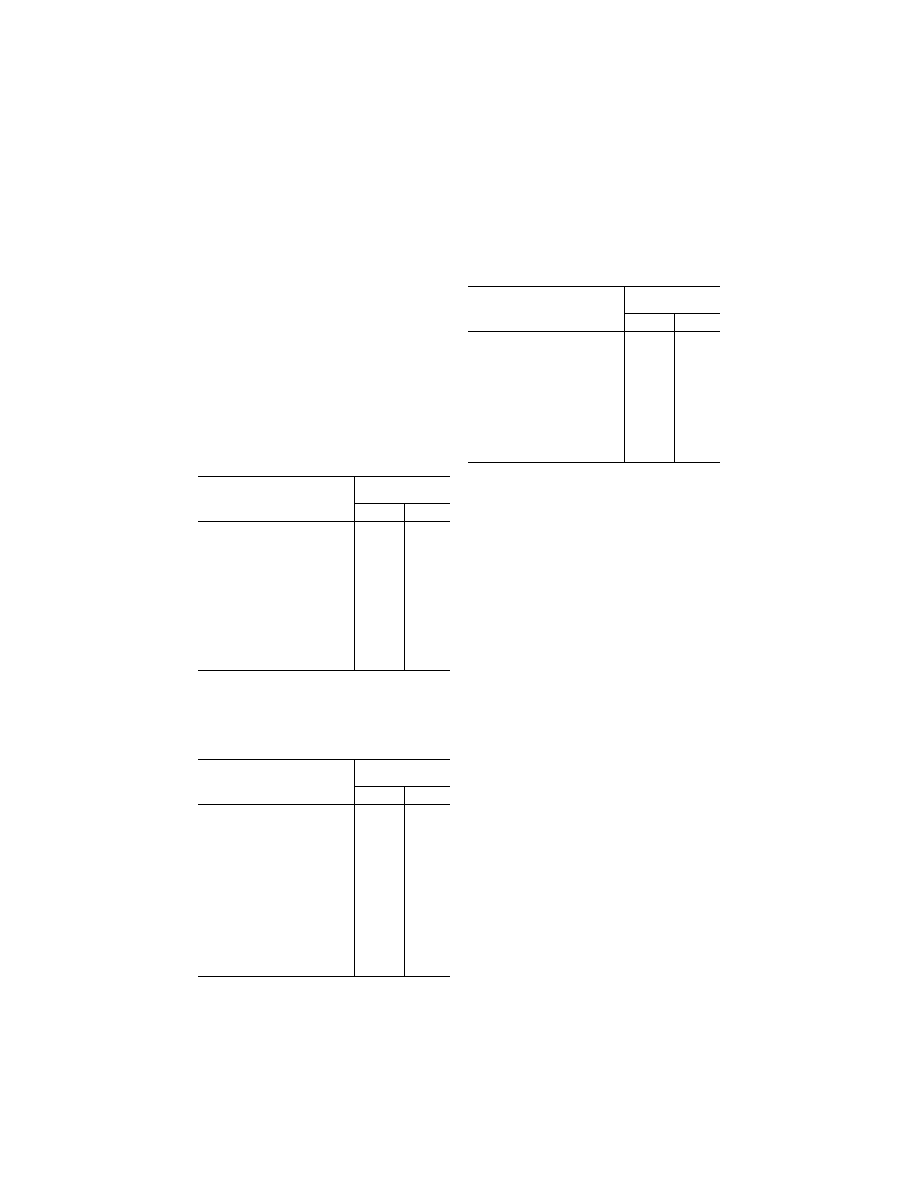
690
14 CFR Ch. I (1–1–19 Edition)
Pt. 29, App. E
A
PPENDIX
E
TO
P
ART
29—HIRF E
NVI
-
RONMENTS
AND
E
QUIPMENT
HIRF
T
EST
L
EVELS
This appendix specifies the HIRF environ-
ments and equipment HIRF test levels for
electrical and electronic systems under
§ 29.1317. The field strength values for the
HIRF environments and laboratory equip-
ment HIRF test levels are expressed in root-
mean-square units measured during the peak
of the modulation cycle.
(a) HIRF environment I is specified in the
following table:
T
ABLE
I.—HIRF E
NVIRONMENT
I
Frequency
Field strength
(volts/meter)
Peak Average
10 kHz–2 MHz ...................................
50
50
2 MHz–30 MHz .................................
100
100
30 MHz–100 MHz .............................
50
50
100 MHz–400 MHz ...........................
100
100
400 MHz–700 MHz ...........................
700
50
700 MHz–1 GHz ................................
700
100
1 GHz–2 GHz ....................................
2,000
200
2 GHz–6 GHz ....................................
3,000
200
6 GHz–8 GHz ....................................
1,000
200
8 GHz–12 GHz ..................................
3,000
300
12 GHz–18 GHz ................................
2,000
200
18 GHz–40 GHz ................................
600
200
In this table, the higher field strength applies at the fre-
quency band edges.
(b) HIRF environment II is specified in the
following table:
T
ABLE
II.—HIRF E
NVIRONMENT
II
Frequency
Field strength
(volts/meter)
Peak Average
10 kHz–500 kHz ................................
20
20
500 kHz–2 MHz .................................
30
30
2 MHz–30 MHz .................................
100
100
30 MHz–100 MHz .............................
10
10
100 MHz–200 MHz ...........................
30
10
200 MHz–400 MHz ...........................
10
10
400 MHz–1 GHz ................................
700
40
1 GHz–2 GHz ....................................
1,300
160
2 GHz–4 GHz ....................................
3,000
120
4 GHz–6 GHz ....................................
3,000
160
6 GHz–8 GHz ....................................
400
170
8 GHz–12 GHz ..................................
1,230
230
12 GHz–18 GHz ................................
730
190
18 GHz–40 GHz ................................
600
150
In this table, the higher field strength applies at the fre-
quency band edges.
(c) HIRF environment III is specified in the
following table:
T
ABLE
III.—HIRF E
NVIRONMENT
III
Frequency
Field strength
(volts/meter)
Peak Average
10 kHz–100 kHz ................................
150
150
100 kHz–400 MHz .............................
200
200
400 MHz–700 MHz ...........................
730
200
700 MHz–1 GHz ................................
1,400
240
1 GHz–2 GHz ....................................
5,000
250
2 GHz–4 GHz ....................................
6,000
490
4 GHz–6 GHz ....................................
7,200
400
6 GHz–8 GHz ....................................
1,100
170
8 GHz–12 GHz ..................................
5,000
330
12 GHz–18 GHz ................................
2,000
330
18 GHz–40 GHz ................................
1,000
420
In this table, the higher field strength applies at the fre-
quency band edges.
(d)
Equipment HIRF Test Level 1.
(1) From 10
kilohertz (kHz) to 400 megahertz (MHz), use
conducted susceptibility tests with contin-
uous wave (CW) and 1 kHz square wave mod-
ulation with 90 percent depth or greater. The
conducted susceptibility current must start
at a minimum of 0.6 milliamperes (mA) at 10
kHz, increasing 20 decibel (dB) per frequency
decade to a minimum of 30 mA at 500 kHz.
(2) From 500 kHz to 40 MHz, the conducted
susceptibility current must be at least 30
mA.
(3) From 40 MHz to 400 MHz, use conducted
susceptibility tests, starting at a minimum
of 30 mA at 40 MHz, decreasing 20 dB per fre-
quency decade to a minimum of 3 mA at 400
MHz.
(4) From 100 MHz to 400 MHz, use radiated
susceptibility tests at a minimum of 20 volts
per meter (V/m) peak with CW and 1 kHz
square wave modulation with 90 percent
depth or greater.
(5) From 400 MHz to 8 gigahertz (GHz), use
radiated susceptibility tests at a minimum
of 150 V/m peak with pulse modulation of 4
percent duty cycle with a 1 kHz pulse repeti-
tion frequency. This signal must be switched
on and off at a rate of 1 Hz with a duty cycle
of 50 percent.
(e)
Equipment HIRF Test Level 2.
Equipment
HIRF test level 2 is HIRF environment II in
table II of this appendix reduced by accept-
able aircraft transfer function and attenu-
ation curves. Testing must cover the fre-
quency band of 10 kHz to 8 GHz.
(f)
Equipment HIRF Test Level 3.
(1) From 10
kHz to 400 MHz, use conducted susceptibility
tests, starting at a minimum of 0.15 mA at 10
kHz, increasing 20 dB per frequency decade
to a minimum of 7.5 mA at 500 kHz.
(2) From 500 kHz to 40 MHz, use conducted
susceptibility tests at a minimum of 7.5 mA.
(3) From 40 MHz to 400 MHz, use conducted
susceptibility tests, starting at a minimum
of 7.5 mA at 40 MHz, decreasing 20 dB per fre-
quency decade to a minimum of 0.75 mA at
400 MHz.
VerDate Sep<11>2014
12:50 Apr 30, 2019
Jkt 247046
PO 00000
Frm 00700
Fmt 8010
Sfmt 8002
Y:\SGML\247046.XXX
247046
spaschal on DSK3GDR082PROD with CFR